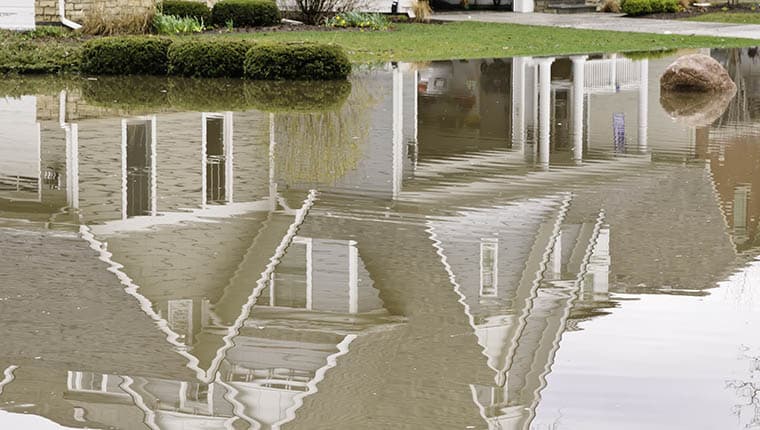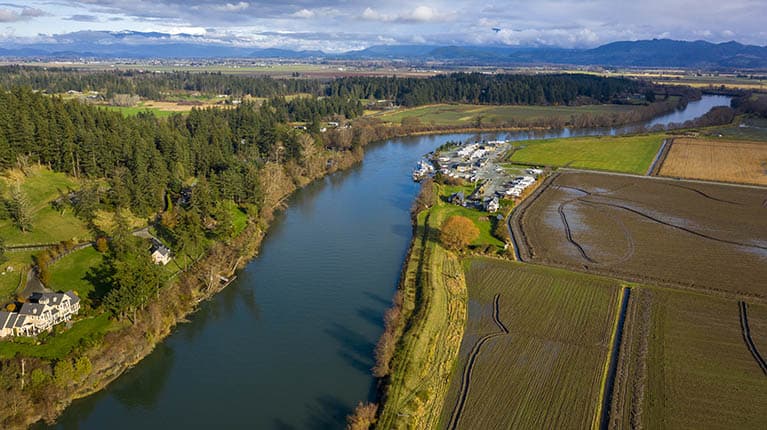Submitting a flood insurance claim can feel stressful. Learn more about the process now to help feel more confident in the event of a flood claim.
Flood insurance can be an important risk mitigation tool to help safeguard your home and financial well-being against the unpredictable and often devastating effects of flooding. Submitting a flood insurance claim after a flooding event may seem intimidating at an already stressful time. It is worth learning about the flood insurance claims process so you can help be prepared in the event of a claim.
Flood Insurance Claims Common Challenges
Flood insurance claims can present several challenges for homeowners, particularly due to the unique nature of flood damage and the complexities involved in the claims process. Here are some common difficulties customers might face:
Understanding Coverage: Flood insurance policies often have specific exclusions and conditions. You may need help understanding what is covered and what isn't to help avoid potential disputes during the claims process.
Documentation Requirements: Filing a flood insurance claim typically requires extensive documentation, including proof of loss, photos of the damage, and receipts for any repairs or replacements. This can be overwhelming, especially if you are dealing with the immediate aftermath of a flood.
Assessment and Inspection Delays: Insurance companies may be inundated with claims after a flood event, leading to delays in assessments and inspections. This can prolong the claim approval and payment process, leaving customers in a difficult position.
Dispute Resolution: The homeowner and the insurance company may disagree about the extent of the damage or the amount of the claim. Resolving these disputes can be time-consuming.
Policy Limits and Deductibles: Customers may find that their policy limits are lower or deductibles are higher than anticipated, resulting in out-of-pocket expenses that can be significant.
Coordination with Other Assistance Programs: In some cases, customers may be eligible for federal or state disaster assistance in addition to their insurance claim. Coordinating these benefits can be complex.
By understanding these challenges, you can better prepare for the flood insurance claims process. These challenges also underline the importance of having an insurance company you can trust. Working closely with your insurance agent or broker is also beneficial. They can help provide guidance and support throughout the process.
It is worth learning about the flood insurance claims process so you can help be prepared in the event of a claim.
The Typical Flood Insurance Claims Process
Dealing with the aftermath of a flood can be an overwhelming experience for homeowners. On the other hand, having a clear understanding of the flood insurance claim process can help alleviate some of that stress. In this section, we provide a general overview of the flood insurance claim process so you can know what to expect. *Note, always be sure to check the terms and conditions of your policy for any carrier-specific claim reporting requirements.
Contact Your Insurance Company.
The first step in filing a flood insurance claim is to report the flood to your insurance company as soon as possible after the flood event. Contact your insurance agent or the insurer's claims department to initiate the process and receive their guidance on the next steps.
Document the Damages.
Document the damages thoroughly before starting any clean-up. Take detailed photographs and videos of the affected areas, noting the extent of the damage to the structure, personal belongings, and any other impacted property. Keep a detailed inventory of damaged items, including a description of each item, its approximate value, and the purchase date, when possible, to support your claim.
Prevent Further Damage.
If safe to do so, take reasonable steps to help prevent further damage to your property, such as boarding up windows or tarping roofs. Keep receipts for any materials you purchase for these emergency repairs.
File the Claim.
This step typically involves completing a Proof of Loss Form, which includes details about the extent and cause of the damage. This form is usually required to be submitted to your insurer within a specific time frame after the flood. Your insurance company should be able to help guide you when filling out this form. Submit the completed Proof of Loss form, documentation, and inventory list to your insurance company.
Assessment and Inspection.
After reporting the loss, an insurance adjuster will be assigned to your case and will visit your property to assess the damage. The adjuster will verify the information you've submitted and may ask for additional documentation. The adjuster will ultimately provide an estimate of the repair or replacement costs for your property and belongings.
Claim Review and Settlement.
After the inspection, carefully review the adjuster's report and the estimated settlement amount. Discuss any discrepancies or concerns with your adjuster or insurance company. Once the claim is approved, you should receive a settlement payment based on the terms of your policy minus any deductibles. This payment may be issued in multiple disbursements, depending on the extent of the damage and the repair process.
Appeals and Disputes.
If you disagree with the settlement offer or have concerns about the claims process, you can submit a written appeal or seek resolution through the insurance company's dispute resolution mechanisms. Consult with your insurance agent or review your policy for specific procedures regarding appeals and disputes. It's crucial to adhere to any deadlines specified in the policy for filing an appeal.
Repairs and Rebuilding.
Maintain communication with your insurance company throughout the repair process. The settlement funds are typically used to hire licensed contractors to repair or rebuild your property. Ask your insurance company if they need to approve your contractors. Ensure that all work is done to code and keep all receipts and contracts for future reference. If any additional damage is discovered or if costs exceed the initial estimate, inform your insurer immediately.
It's important to note that the exact process may vary depending on your insurance company and the specifics of your policy. Always refer to your policy documents and consult with your insurance agent to understand the precise steps and requirements for filing a flood insurance claim.
Find the Right Flood Insurance Coverage for You
Weather the storm with flood insurance solutions from Acrisure. Our licensed agents and brokers have flood insurance expertise. Contact us with flood insurance questions or request a flood insurance quote online now.







